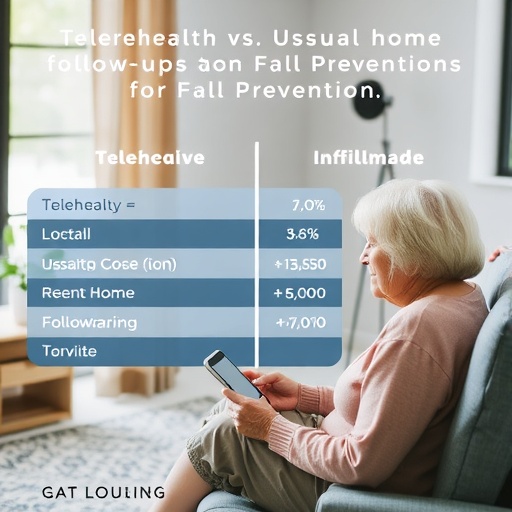
In the realm of modern medicine, the race against time and the quest for optimizing treatment outcomes pose major challenges. For patients faced with severe organ dysfunction, transplantation often represents the last bastion of hope. However, determining who qualifies for such a transformative procedure has historically been fraught with complexity and uncertainty. Recent advancements in predictive modeling stand to revolutionize this process, enabling healthcare professionals to assess transplant eligibility with unprecedented accuracy. The article “Use of Predictive Models to Determine Transplant Eligibility” sheds light on this remarkable evolution in transplant science.
This groundbreaking research, contributed by Berchuck et al., dives into the intricate world of predictive modeling, which utilizes algorithms and machine learning techniques to analyze vast datasets. By leveraging historical medical records, patient demographics, and clinical outcomes, these models synthesize insights that can help clinicians make informed decisions. The potential to refine patient selection serves not only to enhance individual outcomes but also to address broader resource allocation issues in transplant programs.
Historically, the transplant eligibility assessment has relied heavily on subjective criteria and expert opinions, which can vary significantly between institutions. This variability can lead to disparities in patient access and outcomes. However, these predictive models are designed to standardize evaluations, providing a more transparent and measurable approach to eligibility criteria. By analyzing a myriad of factors—such as age, underlying health conditions, and previous treatment responses—these models articulate a clearer picture of patient suitability for transplantation.
The impressive scope of this research is underscored by the integration of machine learning algorithms that evolve with new data. This adaptability grants healthcare providers a dynamic tool capable of refining eligibility assessments in real-time. As more patients undergo evaluation and the dataset expands, these predictive models will become increasingly sophisticated, ultimately enhancing their reliability. Thus, the introduction of these models marks a pivotal moment in transplant science—ushering in an era where data-driven decisions can save lives.
Another crucial aspect highlighted in the article is the ethical implications of employing predictive modeling in sensitive medical decisions. The authors stress the importance of ensuring that these tools do not inadvertently reinforce biases or lead to inequities in healthcare access. Algorithms must be trained on diverse datasets that accurately reflect the populations they serve, mitigating the risk of systemic disparities. As the medical community embraces these innovations, an ongoing dialogue surrounding ethics and fairness remains essential.
The research also brings attention to the operational aspects of integrating predictive models into clinical practice. Clinics and transplant centers must be prepared for the workflow changes that accompany such technological advancements. This includes training staff to utilize predictive tools effectively and adapting existing protocols to incorporate new insights. The transition not only demands technical readiness but also a cultural shift amongst healthcare providers, who must embrace a data-centric approach to patient care.
While the benefits of predictive models are substantial, the article does not shy away from addressing potential pitfalls. Over-reliance on algorithmic interpretations could lead healthcare professionals to overlook the nuances of individual cases. Thus, the study advocates for a complementary approach—utilizing predictive models to inform clinical decisions while retaining the irreplaceable human element in medicine. Engaging clinicians in interpreting model outputs ensures a more holistic understanding of each patient’s unique context.
In addition to their application in transplant eligibility, the methodologies explored offer implications for broader medical fields, including oncology and critical care. The ability to predict patient outcomes and tailor treatment pathways signifies a transformative shift towards personalized medicine. As this trend gains momentum, predictive modeling could dramatically reshape the healthcare landscape, promoting more efficient and effective care delivery.
Prospective studies are needed to empirically validate these predictive models across diverse populations and clinical settings. Future research should focus on refining these algorithms further, exploring not only their predictive power but also their scalability. As the field of machine learning progresses, the integration of artificial intelligence into real-world healthcare systems presents both an opportunity and a challenge—one that must be met with diligence and responsibility.
Amidst the complexities of healthcare technology, patient perspectives must not be overshadowed. Engaging patients in conversations regarding the application of predictive models fosters a sense of agency and trust. Understanding how medical decisions are influenced by data empowers patients to participate actively in their care, bridging the gap between technology and compassionate healthcare.
The implications of Berchuck et al.’s findings extend beyond mere academic interest; they underscore a critical intersection between innovation and patient welfare. As more centers adopt predictive modeling in transplant evaluations, a ripple effect may lead to more equitable patient access and improved outcomes across the board. The larger medical community would benefit from vigilance as these technologies are evaluated and implemented.
In conclusion, the advent of predictive models represents an exciting frontier in transplant eligibility assessment. By harnessing the power of data analytics, clinicians can improve decision-making processes that ultimately save lives. As we move forward, the dialogue around the ethical deployment of these technologies will be vital, ensuring that progress in science does not compromise the foundational principles of equity and compassion in healthcare.
Innovations such as those discussed in the article are critical for the future of transplantation. With the potential to reshape eligibility and enhance patient outcomes, predictive models embody a paradigm shift in how we approach one of the most consequential decisions in patient care. While challenges remain, the journey towards a data-informed era promises to deliver unprecedented opportunities for patients in need.
With anticipation, the medical world watches closely as these tools continue to evolve, hoping for a future where every individual receives the most appropriate care on their journey to recovery. As we harness the potential of predictive modeling, the prospect of a more optimistic and equitable healthcare system comes into clearer view.
Subject of Research: Predictive Models in Transplant Eligibility
Article Title: Use of Predictive Models to Determine Transplant Eligibility
Article References:
Berchuck, S.I., Bhavsar, N., Schappe, T. et al. Use of Predictive Models to Determine Transplant Eligibility.
Curr Transpl Rep 11, 243–250 (2024). https://doi.org/10.1007/s40472-024-00454-4
Image Credits: AI Generated
DOI: 10.1007/s40472-024-00454-4
Keywords: Predictive Models, Transplant Eligibility, Machine Learning, Healthcare Equity, Personalized Medicine
Tags: advancements in transplant science and technologyalgorithms in medical predictive analyticsdata-driven approaches to organ donationdisparities in medical access and outcomeshealthcare resource allocation strategieshistorical challenges in transplant eligibilityimproving patient outcomes through technologymachine learning in healthcare decision-makingoptimizing treatment outcomes in medicineorgan transplantation patient selectionpredictive modeling in transplant eligibilitystandardizing transplant assessment criteria




